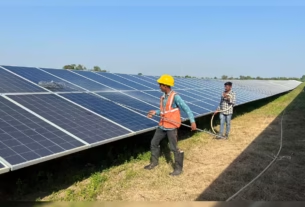In Short : India has set an ambitious target of achieving 40 GW of rooftop solar capacity, a critical component of its renewable energy roadmap. Yet, progress has been slower than expected, with installations standing at around 12 GW by mid-2025. As the primary interface between consumers and the electricity grid, distribution companies (DISCOMs) hold the key to either accelerating or delaying this growth.
Why DISCOMs Matter
DISCOMs are often viewed as reluctant stakeholders in rooftop solar due to concerns over revenue loss when consumers generate their own power. However, with supportive policies, innovative business models, and digital integration, DISCOMs can reposition rooftop solar from being a competitor to becoming an opportunity.
Strategies for DISCOMs to Drive Adoption
1. Integrating Rooftop Solar into Business Models
- Develop utility-led rooftop programs where DISCOMs install and own solar systems on consumer rooftops, offering solar-as-a-service.
- Create new revenue streams by positioning rooftop solar as part of core operations.
2. Leveraging Smart Metering and Digital Platforms
- Deploy prepaid smart meters to enable transparent net metering and real-time energy accounting.
- Launch consumer-facing digital platforms for billing, crediting rooftop generation, and grievance redressal.
3. Innovative Tariff and Net Metering Models
- Transition from net metering to net billing or gross metering in select categories to balance revenue needs with consumer incentives.
- Introduce time-of-day tariffs to encourage efficient use and storage of rooftop generation.
4. Financial Facilitation and Partnerships
- Act as a guarantee mechanism for banks, improving credit access for rooftop solar consumers.
- Collaborate with Renewable Energy Service Companies (RESCOs) for risk-sharing and scalability.
5. Targeting High-Potential Segments
- Focus on the commercial and industrial (C&I) sector, which is financially viable and technically prepared for adoption.
- Design subsidy-linked models to support residential users.
6. Awareness and Consumer Engagement
- Conduct awareness campaigns, workshops, and digital outreach to build trust in rooftop solar benefits.
- Ensure transparent grievance redressal to reduce consumer hesitation.
7. Grid Modernization and Energy Storage
- Invest in grid flexibility and distributed storage to manage variability from rooftop systems.
- Promote integration with battery energy storage systems (BESS) for demand-side management and peak load reduction.
Benefits for DISCOMs
- Reduced Peak Load Stress – Rooftop solar can defer costly investments in transmission and generation.
- Compliance with Renewable Purchase Obligations (RPOs) – Helps meet mandates at lower costs.
- Lower Losses in Urban Areas – Distributed generation reduces transmission and distribution (T&D) losses.
- Enhanced Consumer Satisfaction – Positioning as clean energy partners builds trust and loyalty.
Challenges to Overcome
- Revenue Concerns – Tariff structures must ensure fair recovery of fixed costs.
- Policy Uncertainty – Frequent changes in net metering regulations create confusion for consumers and utilities.
- Capacity Building – Skilled staff and digital systems are essential for large-scale integration.
- Financial Weakness – The stressed finances of many DISCOMs limit investment capacity.
The Road Ahead
The future of rooftop solar in India depends on whether DISCOMs embrace it as an opportunity rather than resist it as a threat. Policy support under initiatives like the PM Surya Ghar Muft Bijli Yojana and digital transformation under the Revamped Distribution Sector Scheme (RDSS) provide the right enabling environment.
By adopting innovative business models, consumer-centric practices, and technology-driven solutions, DISCOMs can transform rooftop solar into a mainstream energy solution.
Conclusion
DISCOMs are not just gatekeepers of rooftop solar—they are catalysts of its growth. By aligning consumer interests with their own financial sustainability, they can turn rooftop solar into a win-win solution: empowering consumers, advancing national climate goals, and ensuring their long-term viability.




